
Rediscovering Japan

Rediscovering Japan
Travel (Nagasaki Part 2 (Central Nagasaki City))

by tomizuta
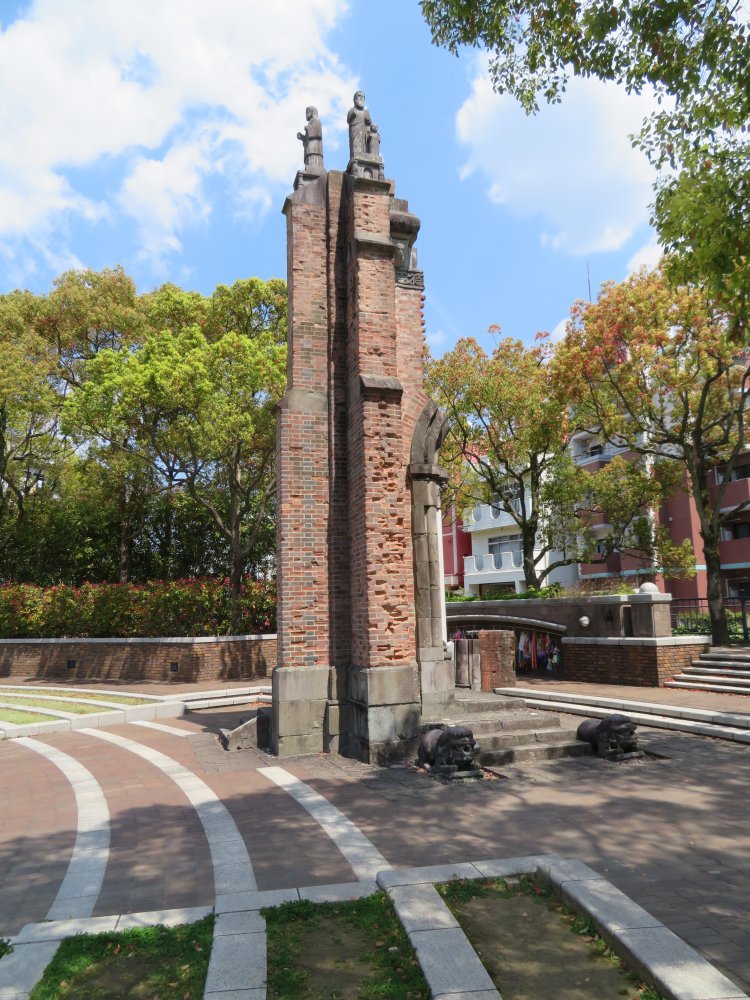
The description by the side of Urakami Cathedral Remnant tells "The explosion of the atomic bomb at 11:02am., 9 August 1945 destroyed Urakami Cathedral, the grandest church in east Asia at the time. Only the broken church wall remained."
What come to my mind when I think of Nagasaki City are its position as the sole window to the West for more than two hundred years, its shipbuilding industry and the tragic atomic bombing in August1945. I knew that I could never visit all the places I wanted on this visit. We still spent a full day and a half. Because my wife wished to pay a visit to her ancestors’ graves in Nagasaki, we first went to the teramachi area where many Buddhist temples are situated. Teramachi is a common feature in large cities especially joukamachi (castle towns). Most well known are the teramachi in Kyoto, Hiroshima and Kanazawa. The reason for the creation of teramachi is said to place it in the peripheral and use it as a shield for attack from the outside. The teramachi of Nagasaki is situated in the hills facing west to Nagasaki Port.
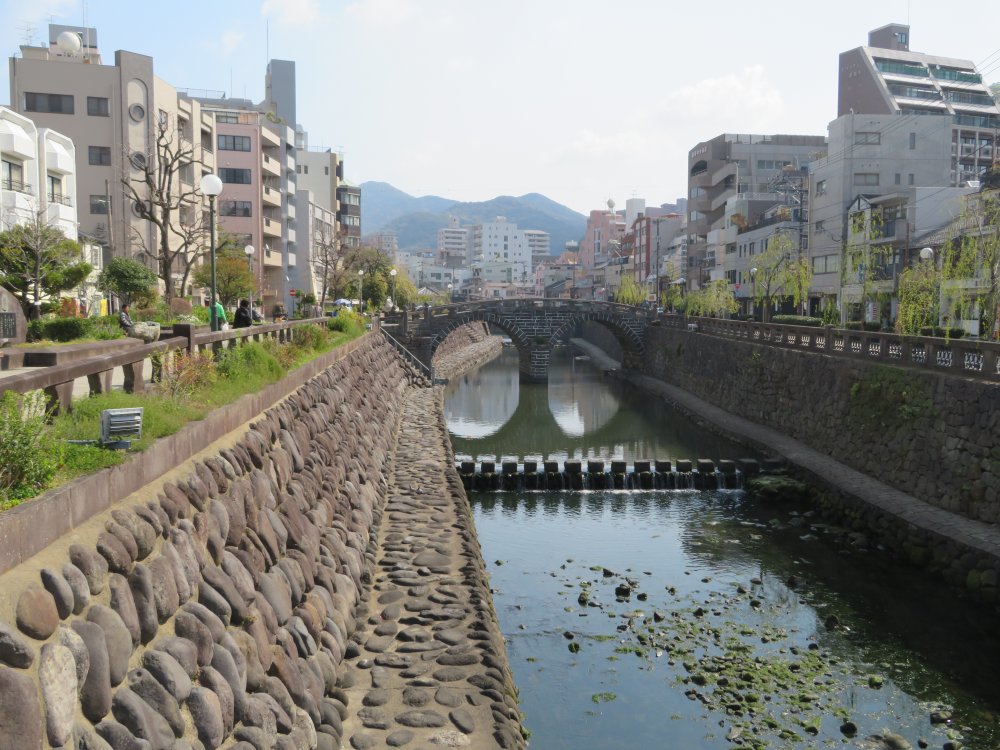
View of Meganebashi from the south.
We first viewed Meganebashi (spectacles bridge), a two arch stone bridge, so called because the reflection of the two arches in the river at full moon resembled a pair of glasses. It is one of the over ten stone bridges crossing over Nakashima River all originally built in the 17th century. I am told Meganebashi was built in 1634 by the Chinese high priest of Koufukuji Temple, which I will introduce later.
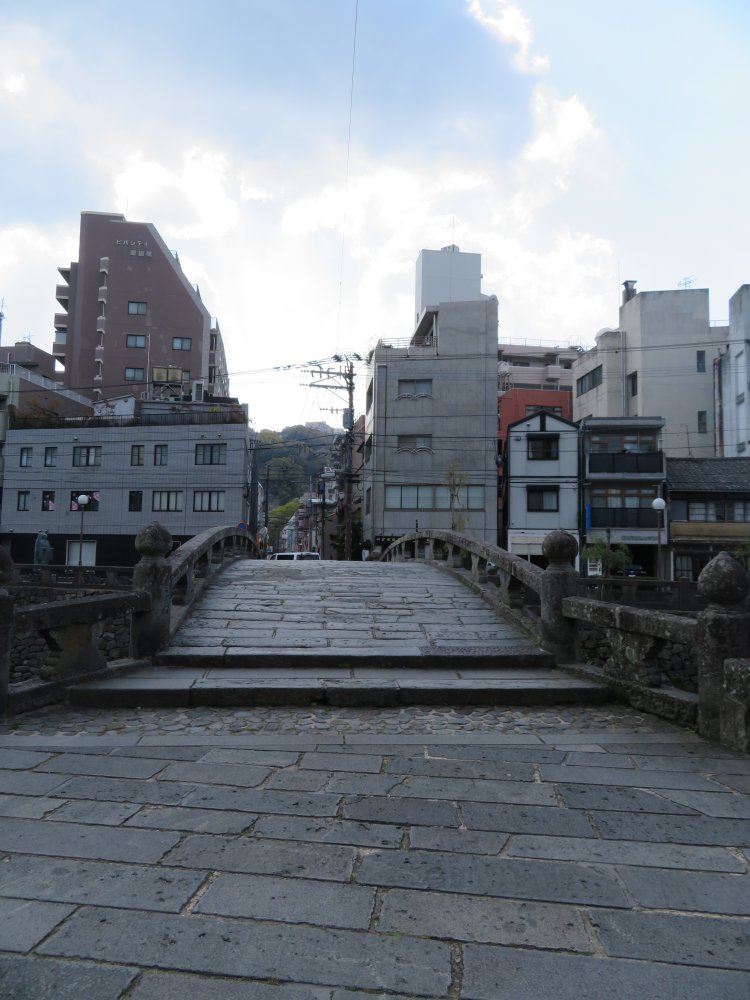
Once you cross Meganebashi from the west side, there is a narrow slope road leading up to Teramachi-doori running north-south.
Once you cross Meganebashi from the west side, there is a narrow slope road leading up to Teramachi-doori running north-south. We turned left to visit Koufukuji Buddhist Temple. I have found some saying that the estimated population of Nagasaki in the 17th century was 60,000 of which one sixth were Chinese, citing it from a description in the Nagasaki History Museum. The Chinese were allowed to live on the mainland as they were not Christians, whilst the Dutch were confined in the small island of Dejima. The Chinese had to outwardly show they were not Christians, which led them to found Chinese temples of which Koufukuji is one. The origin of Koufukuji Temple dates back to 1620 and the founder was the Chinese monk Shin-en. The second head priest was Mokusun-yojou who constructed Meganebashi. The third head priest Itsunenshouyuu was instrumental in inviting the Chinese high zen priest Ingen of Oubakusan Manpukuji Temple in Fujian, China. In 1634, Ingen came to Japan in his sixties, resided one year at Koufukuji and founded the Oubaku zen sect which is related to the Rinzai zen sect. He was given permission to stay in Japan and in 1661 founded Manpukuji Temple in Uji, Kyoto. Hence the Chinese temples in Nagasaki all belong to the Oubaku zen sect of Buddhism. We took a moment to marvel at the grand sanmon gate rebuilt in 1690 after the original gate was lost in the great Nagasaki fire of 1663.
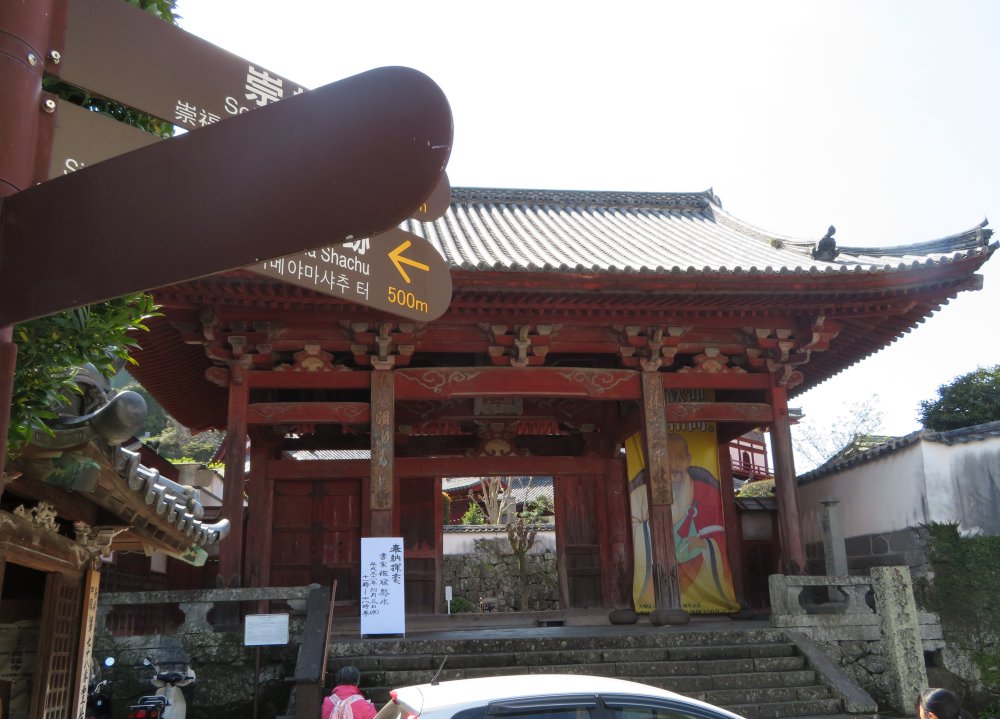
We took a moment to marvel at the grand sanmon gate rebuilt in 1690 after the original gate was lost in the great Nagasaki fire of 1663.
There are a couple of very interesting buildings with characters unseen in Japanese temples. First there is the Maso-dou. Maso is a goddess of maritime safety originated in China, the veneration of which spread to Taiwan and other areas outside of mainland China during its Ming Dynasty (1368-1644). It reminded me of the Maso temple in Tamsui, Taipei that I had visited earlier in the year. All Chinese ships carried Maso statues. When they landed, they would carry her to Koufukuji, and then back to the ships when they set sail. A Maso parade portraying this is held every year.
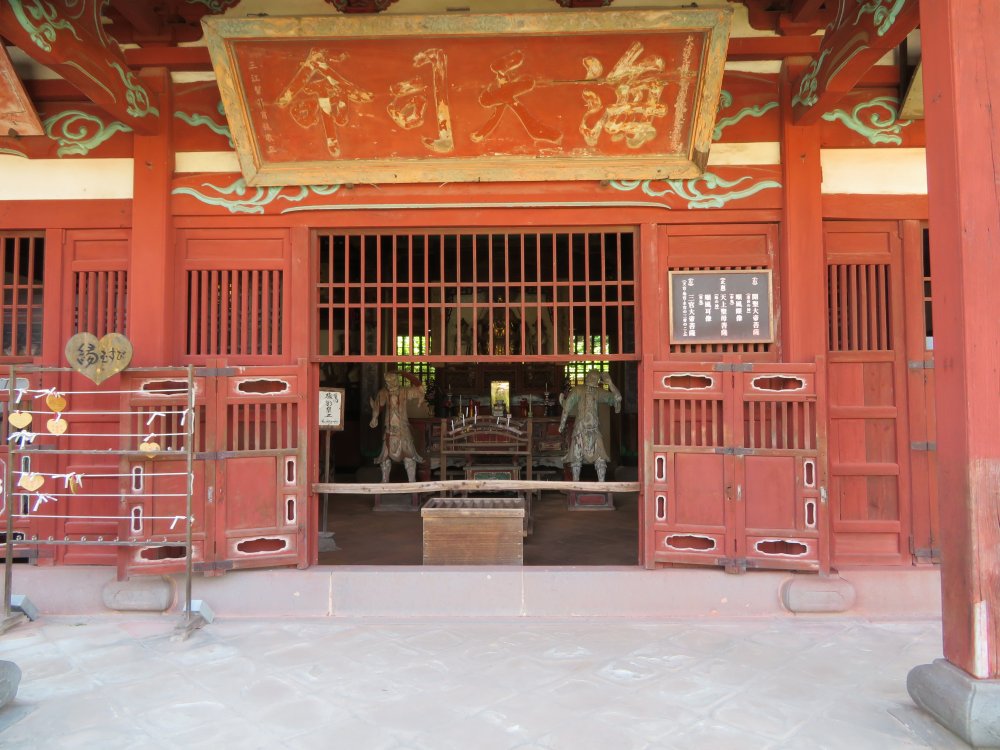
The Maso-dou.
Then there is the grand main temple building Daiyuu Houden. The original building was constructed in 1632 but was destroyed by fire. The current building was built in the Meiji era in 1883. I understand from the temple’s website that it “is built in a purely Chinese architectural style, and consists almost entirely of wood carved and prepared in China for export to Japan.” I was able to make out the Ruri-tou glass lantern hanging from the ceiling, the largest of its kind in Japan. It has been designated as a national important cultural property.
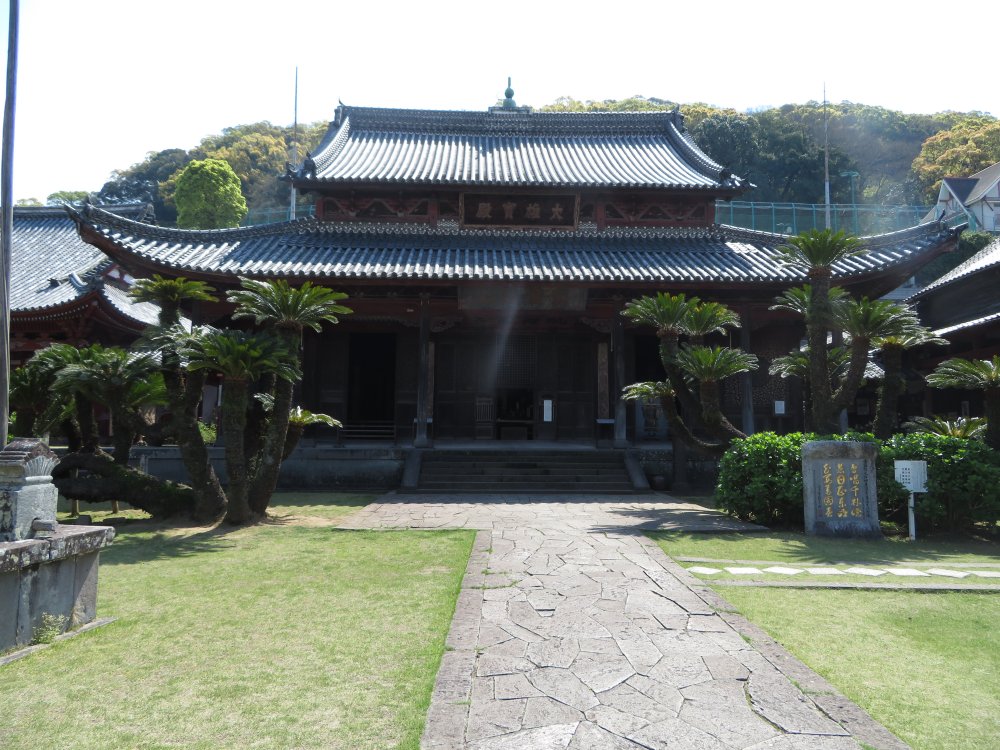
Daiyuu Houden. The current building was built in the Meiji era in 1883.
There is also the Toujin Yashiki-mon (Chinese residence gate) relocated
to this site in 1960. The Chinese residences in the Chinese settlement
area of Kannai have all been lost except this gate. This gate has also
been designated as a national important cultural property.
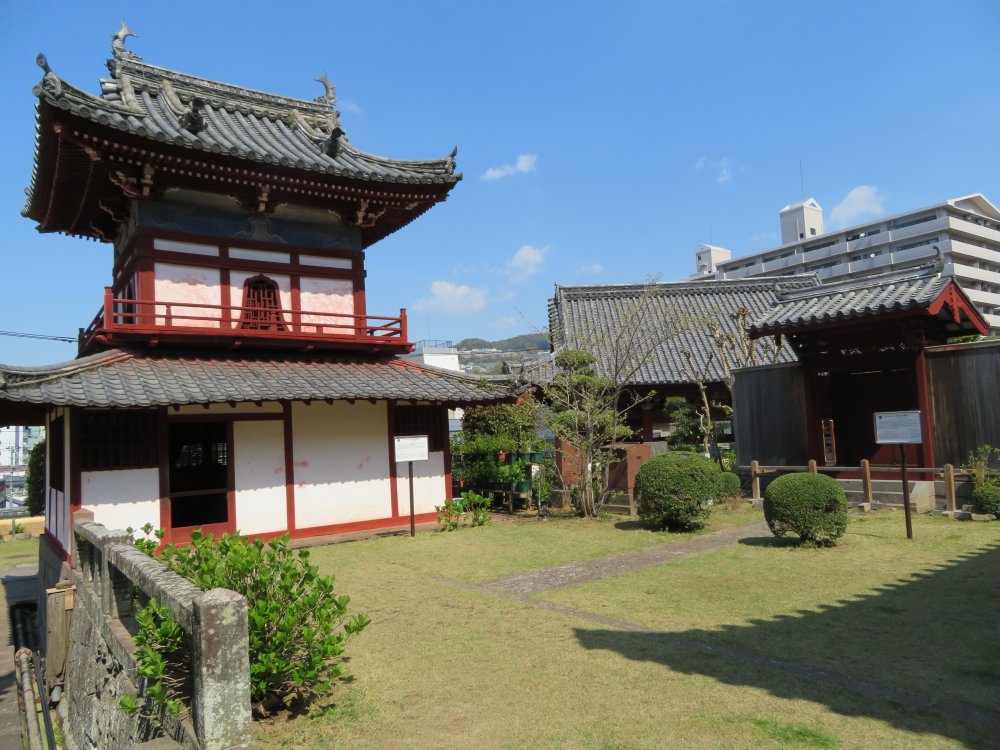
The Toujin Yashiki-mon is on the right of the belfry.
We took the city tram (privately owned and not municipal) to Heiwa-kouen Station. The entrance to the Heiwa-kouen (Peace Park) is almost in front of the Station. I am ashamed to say that this is my first visit, and although I have seen the images on TV so many times, my knowledge was much less than that for Hiroshima, where I’ve been a number of times. This was the first time I learnt that the primary target of the A-Bomb on August 9th, 1945 was Kokura (now part of Kitakyuushuu City), and because of the dense clouds over Kokura that the secondary target Nagasaki was bombed. We went up to the Peace Statue and the Peace fountain in front and solemnly left for Ooura Catholic Church.
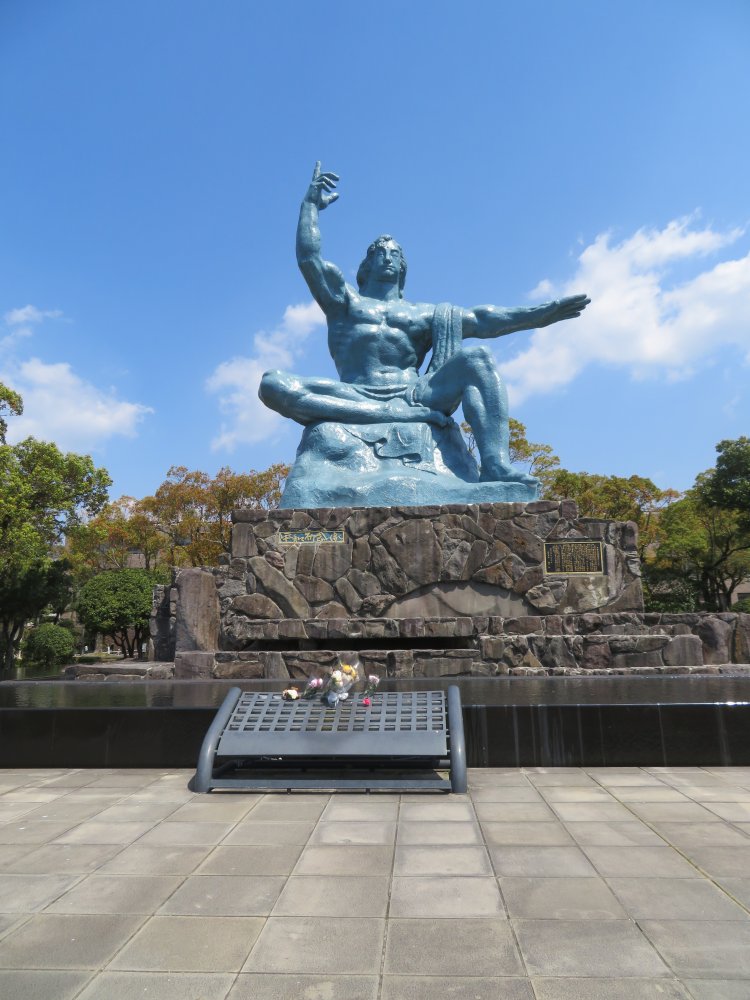
We went up to the Peace Statue and the Peace fountain in front and solemnly left for Ooura Cathedral.
It’s about a ten minutes’ walk from the Peace Park to Urakami Catholic Church. The history of the church can be traced back to 1879, six years after the ban on Christianity was lifted when the first church was built. It moved to the current site a year later, construction started and the cathedral was completed in 1914. The cathedral was completely destroyed by the atomic bombing. The current cathedral was rebuilt in 1959 after a long debate on whether to preserve the ruins or not.

The cathedral was completely destroyed by the atomic bombing. The current cathedral was rebuilt in 1959 after a long debate on whether to preserve the ruins or not.
The description on the board tells us “The A-bombed wooden statue of Virgin Mary was miraculously found among the rubble and now lays to rest in a small chapel next to the cathedral”. I may be mistaken but I believe we observed the statue on our left side after entering the cathedral. We also visited the collapsed bell tower that tumbled down to the bottom of the hill on which the cathedral stands and has been preserved to this day.
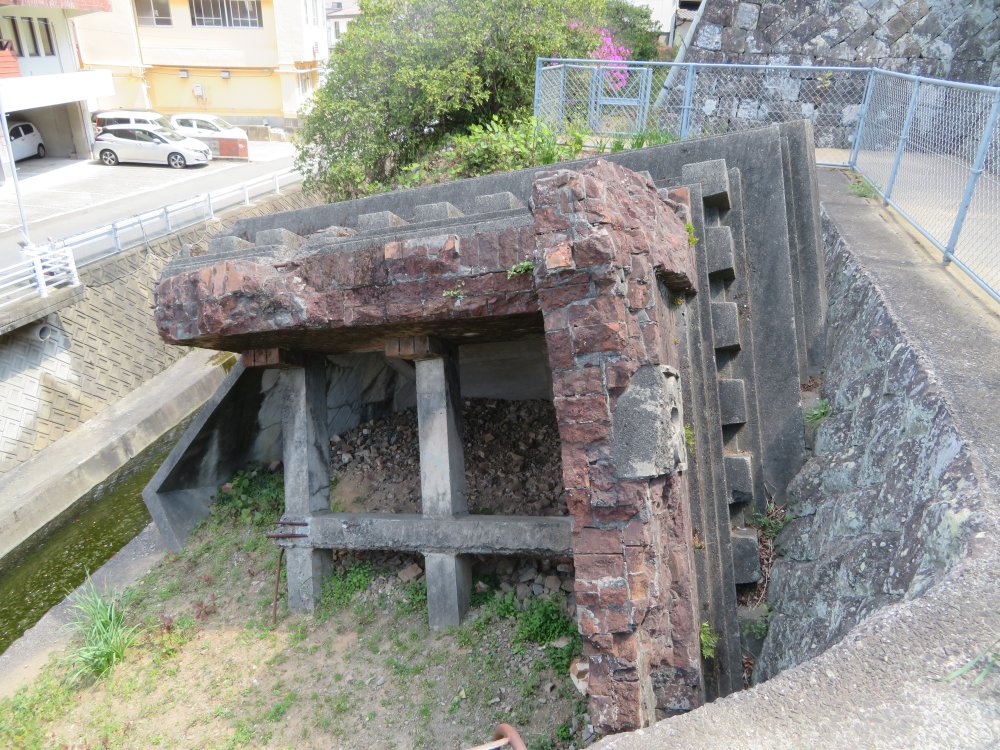
The ruins of the collapsed North Bell Tower.
We then walked about ten minutes to the hypocenter which is a park further east to Peace Park. A monument has been erected at the hypocenter. Close by is the remnant of the ruined walls of Urakami Cathedral relocated to this site when the cathedral was reconstructed.
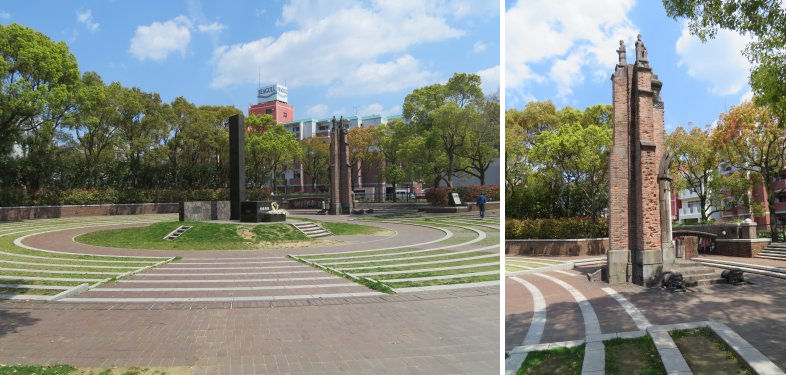
The hypocenter monument (left) and the remnant of the ruined walls of Urakami Cathedral relocated to this site when the cathedral was reconstructed (right).
It was time for lunch, so we took the tram back to Nagasaki Station. We had already tried champon and saraudon, the two famous dishes of Nagasaki, and we had planned to visit the restaurant that invented both dishes in the evening, so we wanted to try something different. We wandered around and found that the site of the memorial of the twenty-six martyrs was close by, so we decided to visit there first. Hideyoshi Toyotomi banned Chtistianity in 1587 but this was not strictly enforced until Ieyasu Tokugawa issued a similar ban in 1613 and later years, particularly after the Shimabara Rebellion in 1637 to 1638 (I will talk about this later under my visit to Shimabara Peninsula). However, in 1596, twenty-six Christians including six non-Japanese missionaries were caught mainly in Kyoto and sentenced to death under the order of Hideyoshi. They were executed in Nagasaki the following year. A monument has been erected on the site which is now a park. There is a museum near the monument which we passed on this occasion.
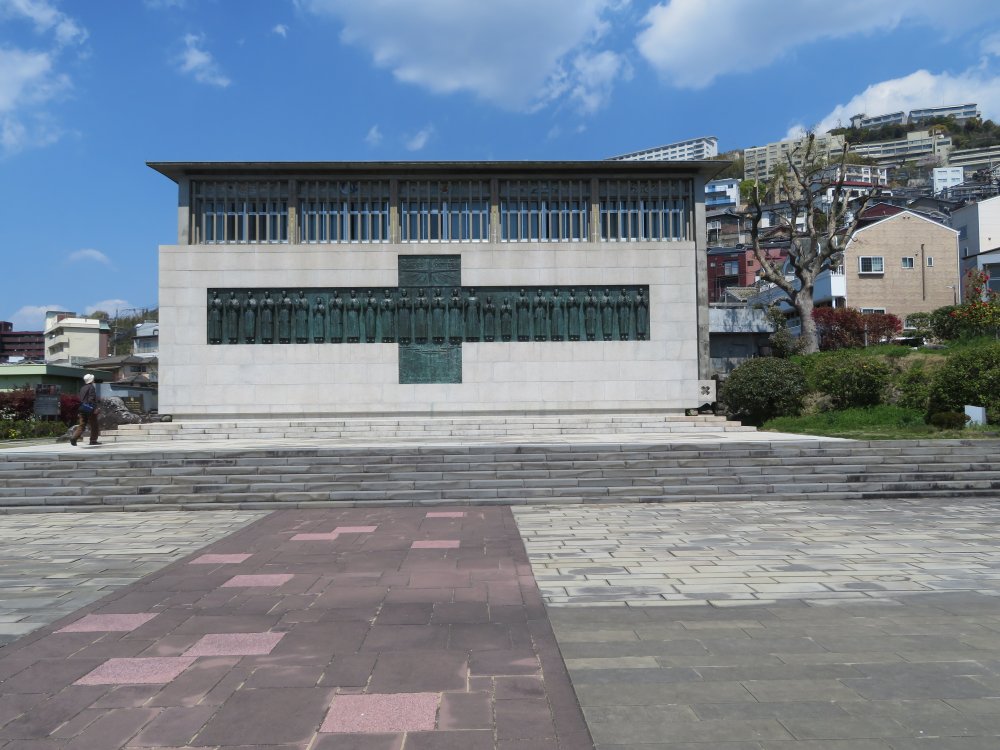
A monument for the twenty-six martyrs has been erected on the site which is now a park.
We paid a quick visit to Saint Philip Catholic Church behind the monument constructed in 1962 simultaneously with the monument, named after the Mexican martyr, one of the twenty-six. The church has a unique architecture designed by the architect Kenji Imai influenced by the Spanish architect Gaudi. We were welcomed to take a look inside.
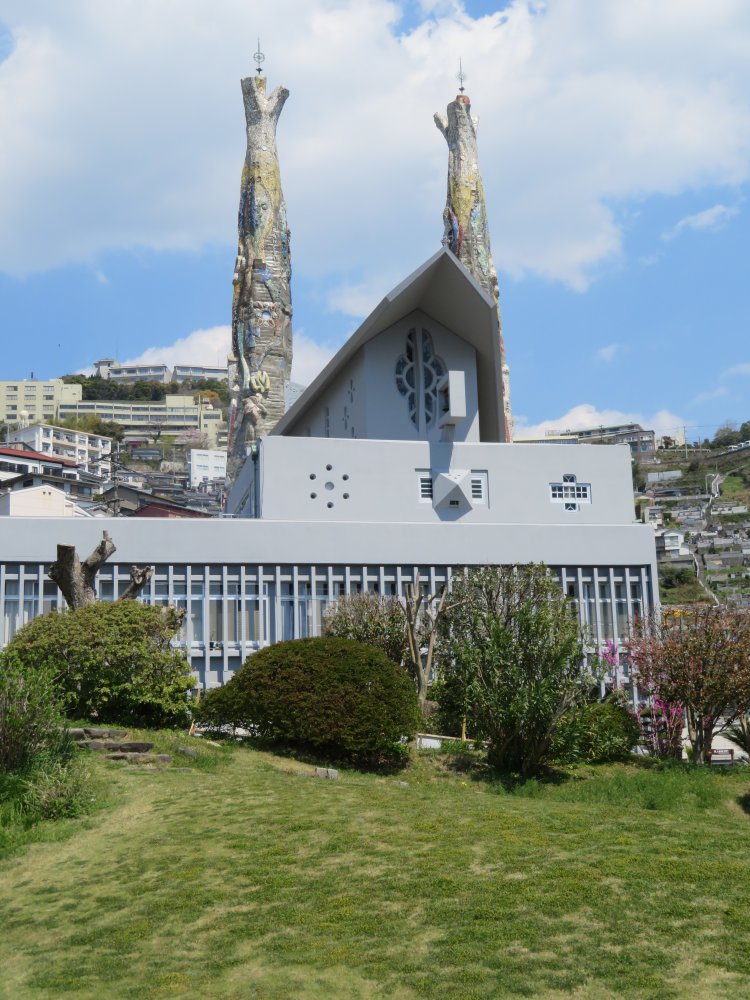
We paid a quick visit to Saint Philip Catholic Church behind the monument.
We resumed our search for a restaurant. We finally settled for a restaurant specializing in local seafood. I ordered their Nagasaki-kou (port) lunch course. The menu was composed of local sashimi, fried fishmeal, a side dish, rice, pickles and miso soup. I didn’t know until this trip that surimiage (fried fishmeal) is also a Nagasaki delicacy. I thoroughly enjoyed the lunch.
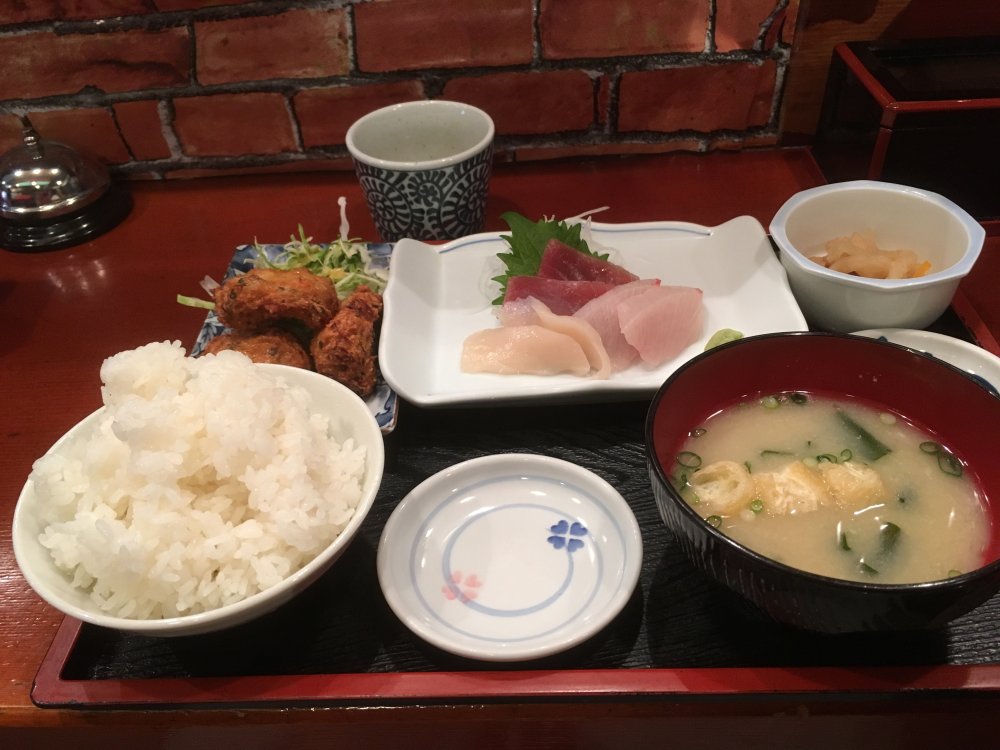
The menu was composed of local sashimi, fried fishmeal, a side dish, rice, pickles and miso soup. I didn’t know until this trip that surimiage (fried fishmeal) is also a Nagasaki delicacy.